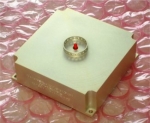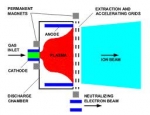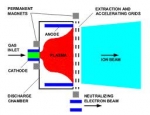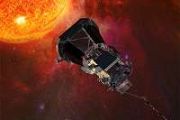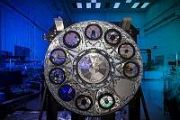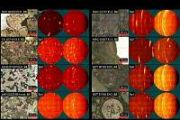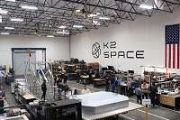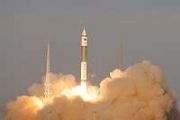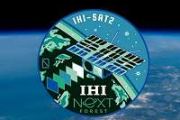Displaying items by tag: propulsion
Masten Space Systems
Masten Space Systems is an US rocket company that is currently developing a line of reusable spacecraft, and related rocket propulsion hardware.
Masten Space Systems designs, builds, tests and operates reusable launch vehicles.
Masten Space Systems competed in the NASA and Northrop Grumman Lunar Lander Challenge X Prize in 2009, winning the level one second prize and the level two first prize. On November 2, 2009 it was announced that Masten Space Systems had won first place in the level two category, with Armadillo Aerospace coming in second.
Reaction Engines Limited
Reaction Engines Limited (REL) is a British aerospace company based in Oxfordshire, England.
The company conducts research into space propulsion systems, centred around the development of the Skylon re-usable SSTO spaceplane. The three founders worked together on the HOTOL project, funding for which was withdrawn in 1988, largely due to significant technical obstacles.
MICROJET Propulsion Module
MICROJET Small Satellite Propulsion Module.
Company: AI: Aerospace Innovation GmbH
NPO Energomash
NPO Energomash is a Russian manufacturer, which focuses primarily on the development and production of liquid propellant rocket engines.
NPO Energomash is based in Khimki, Moscow state, with satellite facilities in Samara, Perm, and St. Petersburg, and employs close to 5500 workers. Originally founded in 1946 as OKB-456, the company is noted for its long history of large scale LOX/Kerosene engine development, notably the RD-107, RD-170, and RD-180 engines, as well as UDMH/N2O4 engines RD-253 and RD-275 used on the Proton rockets. These engines have functioned as prime movers for such vehicles as R-7, Proton, Soyuz, Energia, Zenit and Atlas V.
NPO Energomash acquired its current name on May 15, 1991, in honor of its chief designer.
Aerojet
[ merged in 2013 in Aerojet Rocketdyne ]
Aerojet was an American rocket and missile propulsion manufacturer based primarily in Rancho Cordova, California, with divisions in Redmond, Washington, Orange, Gainesville (both in Virginia) and Camden, Arkansas.
Aerojet was owned by GenCorp. It was one of the rare companies that provide both solid rocket motors and liquid rocket engines. Its products include a range of motors, from main engines used on a number of NASA vehicles and ballistic missiles, down to station-keeping thrusters for spacecraft. The propulsion devices include rocket motors as large as the EELV Atlas V strap-on rocket boosters.
Aerojet provided almost all of the USA Army's tactical missile rocket motors. They develop and manufacture a range of air breathing ramjet and scramjet engines. They also do research in the area of electric ion and Hall effect thrusters.
Air Liquide S.A.
Air Liquide S.A. is a French multinational company which supplies industrial gases and services to various industries ; this includes cryogenic propellants and cryogenic stages for launch vehicles.
Founded in 1902, it is currently (Nov. 2012) one of the world's largest suppliers of industrial gases by revenues, and has operations in over 80 countries. It is headquartered in Paris, France. It also has a major site in Japan, as well as in Houston, TX, and Newark, DE, USA.
references:
Pratt & Whitney Rocketdyne (PWR)
[ merged in 2013 in Aerojet Rocketdyne ]
Pratt & Whitney Rocketdyne (PWR) was a United States company that designed and produced rocket engines that use liquid propellants.
PWR was a division of Pratt & Whitney. It was a provider of high-value propulsion, power, energy and innovative system solutions used in a wide variety of government and commercial applications, including the main engines for the space shuttle, Atlas and Delta launch vehicles, missile defense systems and advanced hypersonic engines.
Pratt & Whitney Rocketdyne was headquartered in Canoga Park, Calif., USA.
SAFRAN Pyroalliance
SAFRAN Pyroalliance is a European producer of energetic equipment: design, production and marketing of a wide range of equipment to meet the demanding specifications of aerospace, defense and industry. These energetic equipments perform a number of critical functions, including launch, propulsion, flight control and range safety.
SAFRAN Pyroalliance is a subsidiary of Herakles (Safran group).
It has built up expertise in the technologies needed to convert energy from an energetic material (grain, propellant, explosive) into a function or combination of functions. These functions generally involve a mechanical action (push, pull, inflate, cut, release, etc.), or the transmission of a command (ignite, separate, supply a fluid, generate a gas or thrust). A complete function can be performed by coupling different assemblies (ignition and safety, command transmission, terminal functions such as ignition or a mechanical action).
Pyrotechnic technologies offer a number of advantages over conventional electromechanical, pneumatic or hydraulic systems:
- Significant energy developed in a controlled time (from less than a millisecond to several seconds).
- Low triggering energy (mechanical or electric).
- Smaller and lighter.
- Very high reliability, security and availability.
- Little or no maintenance over lifetime.
- Operating time compatible with need for simultaneous or synchronized requirements.
- Robust resistance to external hazards (vibration, shock, electrostatic discharge, electromagnetic, thermal, etc.).
XIPS - Xenon Ion Propulsion System
XIPS is a com-mercial electron bom-bardment thruster (also known as an electrostatic ion thruster) – a form ion propulsion – that is a product of Hughes Space and Communications Company, which, in 2000, became part of Boeing Satellite Systems.
XIPS (pronounced "zips") employs the heavy inert gas xenon as a propellant. It was first used operationally aboard the PAS-5 (PanAmSat-5) communications satellite in 1997 and has since been fitted to many other geosynchronous satellites for use primarily in station-keeping. In a XIPS, xenon atoms are injected into an ionization chamber and ionized by electron bombardment. The propellant is then electrostatically accelerated through a series of biased grids. Ions, ejected by XIPS, travel in a stream at a speed of 30 km/s (62,900 mph), nearly 10 times that of a conventional chemical thruster. The high efficiency of the system leads to a reduction in propellant mass of up to 90% for a satellite designed for 12–15 years operation.
For example on a XIPS equipped Boeing 702 satellite, four 25-cm thrusters provide economical station keeping, needing only 5 kg of fuel per year. Boeing asserts that this is "a fraction of what bipropellant or arcjet systems consume". Boeing further asserts, that a XIPS can be used for final orbit insertion and has orders ( source: Wikipedia, Boeing_702 ) for spacecraft utilizing only ion thrusters. This conserves even more payload mass, as compared to using an on-board liquid apogee engine.
XIPS - Xenon Ion Propulsion System
XIPS is a commercial electron bombardment thruster (also known as an electrostatic ion thruster) – a form ion propulsion – that is a product of Hughes Space and Communications Company, which, in 2000, became part of Boeing Satellite Systems.
XIPS (pronounced "zips") employs the heavy inert gas xenon as a propellant. It was first used operationally aboard the PAS-5 (PanAmSat-5) communications satellite in 1997 and has since been fitted to many other geosynchronous satellites for use primarily in station-keeping. In a XIPS, xenon atoms are injected into an ionization chamber and ionized by electron bombardment. The propellant is then electrostatically accelerated through a series of biased grids. Ions, ejected by XIPS, travel in a stream at a speed of 30 km/s (62,900 mph), nearly 10 times that of a conventional chemical thruster. The high efficiency of the system leads to a reduction in propellant mass of up to 90% for a satellite designed for 12–15 years operation.
For example on a XIPS equipped Boeing 702 satellite, four 25-cm thrusters provide economical station keeping, needing only 5 kg of fuel per year. Boeing asserts that this is "a fraction of what bipropellant or arcjet systems consume". Boeing further asserts, that a XIPS can be used for final orbit insertion and has orders( source: Wikipedia, Boeing_702 ) for spacecraft utilizing only ion thrusters. This conserves even more payload mass, as compared to using an on-board liquid apogee engine.



